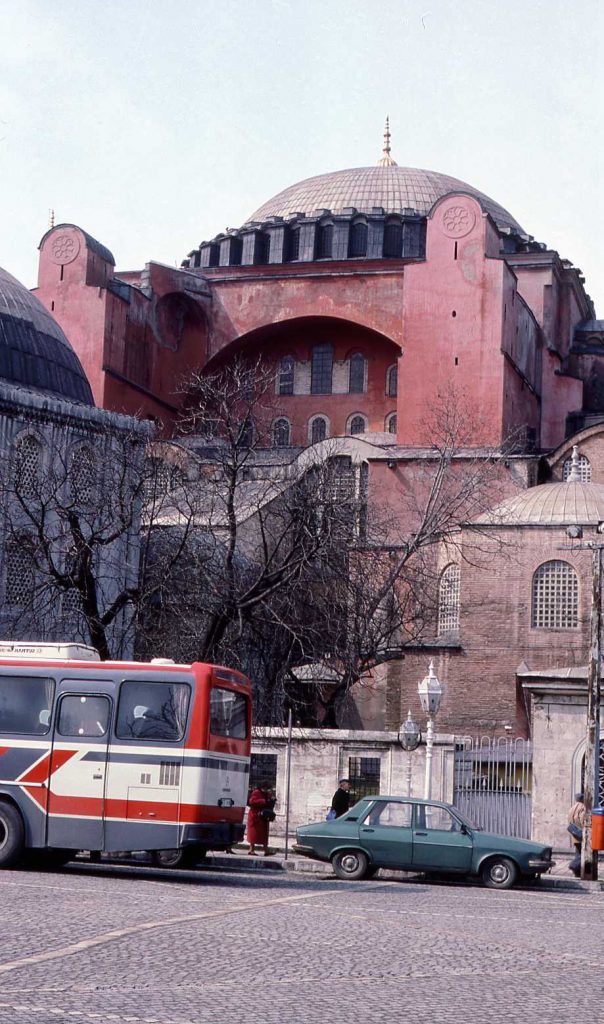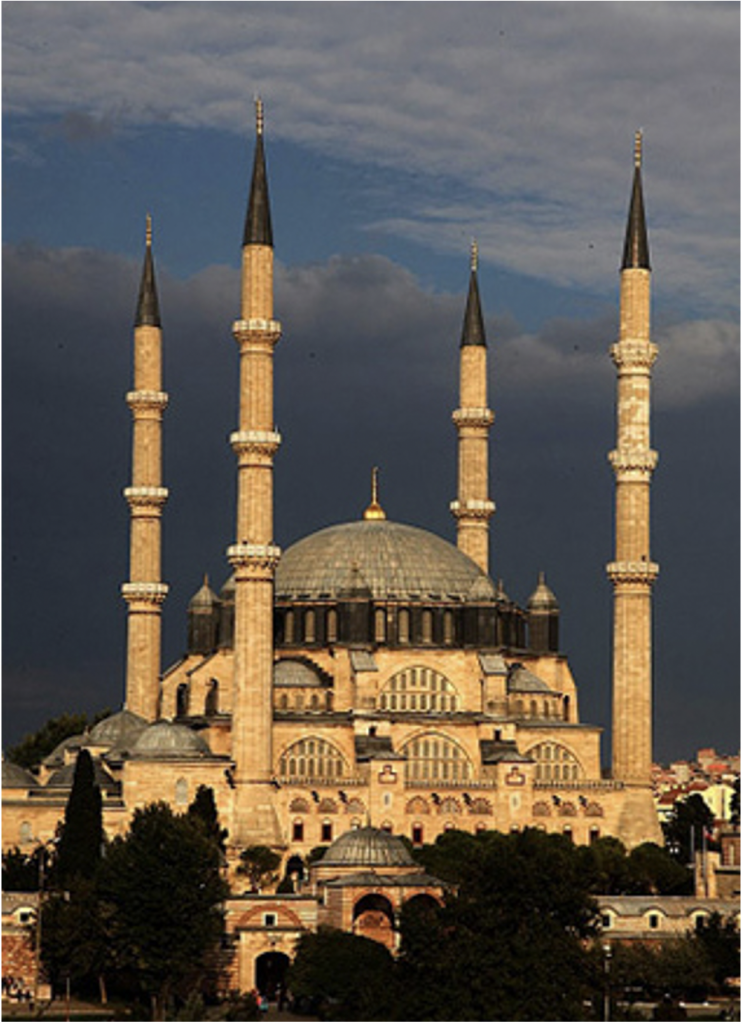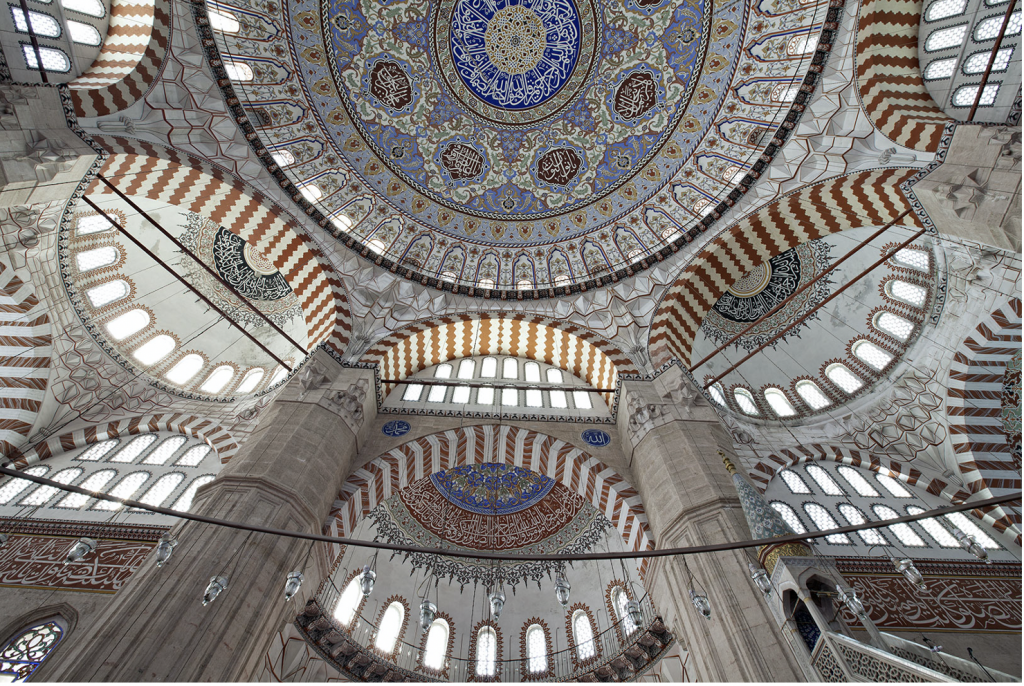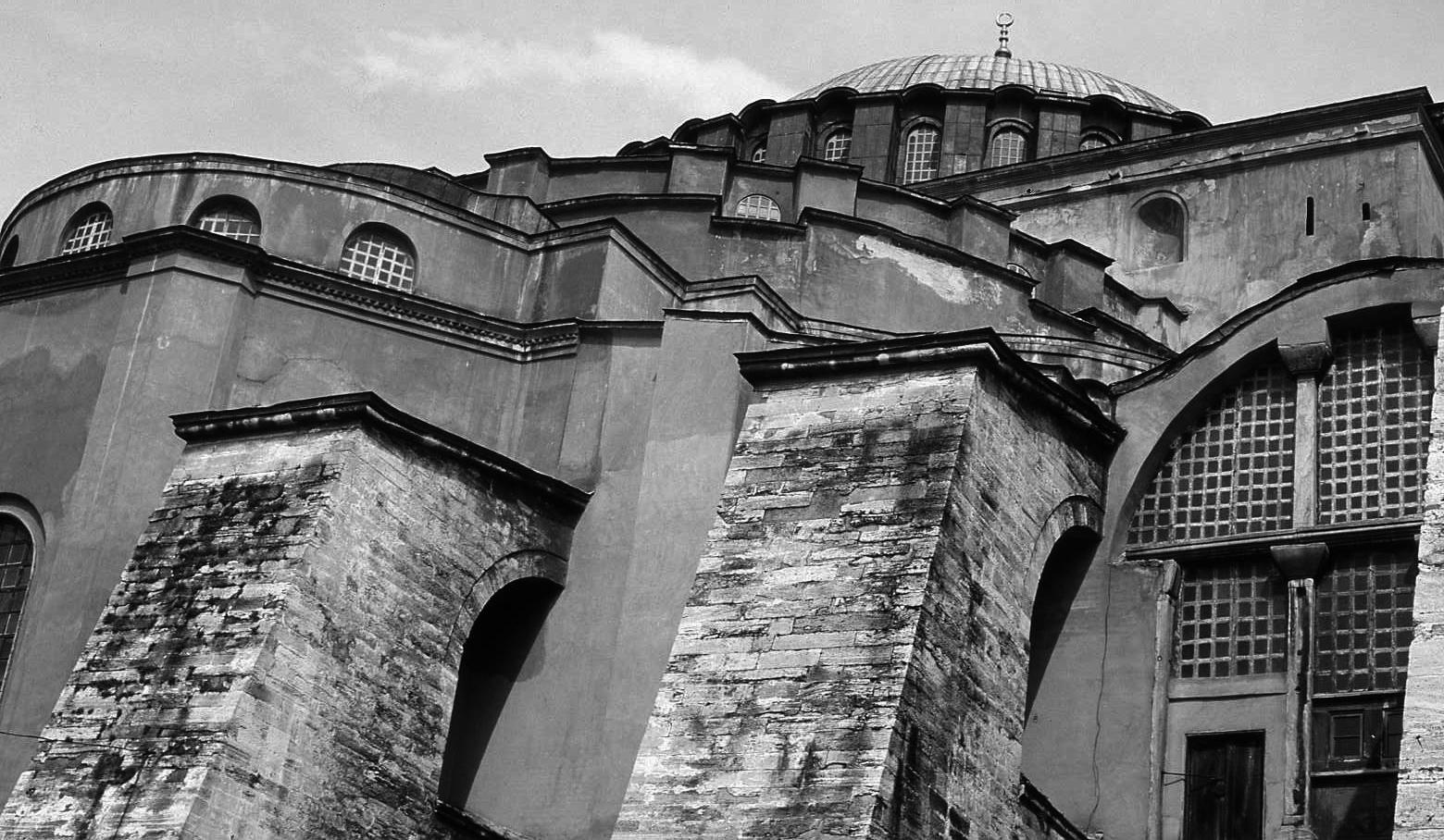Originally published September 2020.
My first visit to Istanbul was part of an architectural tour while studying at the Architectural Association. We were ably led by my tutor, Mark Prizeman, who was a founding member of the avant-garde architectural group NATO (which stood for Narrative Architecture Today). NATO took a serious although somewhat anarchic view of architecture so our first project, which was called a ‘derive’, involved a technique borrowed from a French group of late twentieth-century artists and intellectuals known as the Situationists. This deconstructive approach involved throwing a ruler randomly onto a map of the city, drawing a line and then following that line as a method of ‘non-hierarchical’ exploration of the city. What followed was a very revealing but random cross-section of what was then, in the early 1990s, a wonderfully diverse, chaotic and inspiring city.
Unfortunately, in this instance, we ended up in the docks being surrounded by a pack of wild dogs, one of whom managed to bite a large chunk out of my tutor’s leg. This was no problem for one of the members of our group, who assured us with a grin that he happened to have brought a large hunting knife just for such an occasion and proceeded to tell us about the merits of cauterising such a wound with said knife, heated to red hot. Perhaps fueled by the copious quantities of raki (the local aniseed alcohol) that we had drunk, we all agreed that this was a sensible idea. The hilarious vision of ten students pinning down our much loved and respected tutor as he writhed in agony on the hotel bed as a red-hot knife was applied to his wound will forever be seared, as it were, into my memory.
For me then, Istanbul always had this wild, edgy randomness attached to it. It was a thriving, anarchic mess, where cross-dressing nightclubs were adjacent to ancient Roman amphitheatres; where exotic spiced tripe bars co-existed with resuscitated American taxis from the 1950s called ‘Dolmus’. The steam of ancient Turkish baths mixed with the wood smoke from a million wood fires. If you wanted to plug into the electricity grid you just threw a wire over the nearest pylon, and if you wanted to build a fire you just banged a hole in the wall and put a flue through it. Planning, in the sense we know it in Britain, just did not exist. In fact, it encapsulated, almost perfectly the philosophical approach of NATO, which celebrated the diverse and uncontrollable city as the prototype for all building.
This is why I was so disappointed when I heard that the Turkish president, Recep Tayyip Erdogan, had announced that the Hagia Sophia in Istanbul will again become a mosque and hold religious services. It has been a secular space since 1935 when President Ataturk established it as a museum. This seemingly populist decision seems at odds with the city I once knew and loved.

When the Roman Emperor Constantine converted to Christianity on his death bed in 337AD, the Empire in the East (that part that was not overrun by Gothic tribes from the North) became and remained Christian. The Hagia Sophia was designed as a church and completed in 537AD for the Emperor Justinian, who declared on completion, “Solomon, I have outdone thee!” This vast building contained the world’s largest interior space for many centuries. The Byzantine Empire (as the Eastern Roman Empire came to be known) was eventually overrun by the Ottomans in 1453 when Constantinople fell to Sultan Mehmed ‘The Conqueror’ and the Hagia Sophia was then converted immediately to a mosque.
Initially mosques were just open spaces, possibly within a courtyard, but gradually they became enclosed. Early Ottoman mosques, like early churches, tended to be domes supported on four walls. The dome, when viewed from underneath, conveyed a sense of the cosmos or the infinite but more pragmatically it was the easiest way, technically, to maximise the span of a roof over a large space. So it was not a huge leap of faith just to use this vast Christian dome as a mosque. However, what was missing was a means to call the people to prayer. This was usually achieved by a holy man chanting from a high place adjacent to the mosque and later from a tall, thin tower or minaret.
A small wooden minaret was constructed on the west façade of the Hagia Sophia in 1485 not long after the Ottoman conquest. A little later a brick minaret was added. Then in 1573, the great polymath architect and engineer Mimar Sinan was employed to shore up the building, which he did with some heavy buttressing. He also managed to persuade Sultan Selim II to add not just one but two further minarets. This gave the building the symmetry that it retains to this day, with four minarets, one on each corner. Eventually the wooden minaret was replaced too, and the four sturdy and massive minarets (one still in brick) with tapering conical roofs are those that we see today. These minarets are important architecturally because they define the space around the great dome and lift the eye upwards, away from the bulky and unattractive base. Without minarets the prospect of a large flat dome is uninspiring, but with a minaret on each corner the ensemble comes together as a pleasing whole.

Not all mosques are designed as a dome with a minaret on each corner, but many thousands are. The Hagia Sophia, an early Christian church, ironically became a prototype for mosque design throughout the Ottoman Empire and beyond. And the argument for this satisfactory symmetry is well illustrated by the unattractive and confusing arrangement of six minarets surrounding the famous Blue Mosque, also in Istanbul.
Sinan was the grand master of mosque design, and this architectural genius worked for three sultans during his long life. It is not known for certain but it is believed that he was born in a Greek village in what is now Armenia and was raised as an Orthodox Christian before being recruited to work for the Sultan. He eventually became a janissary commander of the Sultan’s elite guard. He refined his engineering and architectural skills while on campaign. The apex of all mosque design must surely be Sinan’s Selimiye mosque in Edirne (also known historically as Adrianopolis). Edirne was the capital city of the Ottoman Empire from 1369 until 1453, when it was replaced by Istanbul.
Edirne is situated on a bend of the River Meric, only about a two-hour drive west from Istanbul. It contains a myriad of wonderful mosques, baths and bridges. Being on the western edge of the Ottoman Empire, it was often contested. Despite this, the city is in a remarkable state of preservation and, although little-known, is definitely worth a visit should you have ever have an idle day in Istanbul.
Le Corbusier compared the Selimiye mosque to a crown. “Adrianopole (Edirne) is like a swelling on this vast plateau, culminating in a magnificent dome… Sultan Selim gives the city a tiara of great splendour.” The Selimiye mosque, Sinan’s self-described masterpiece, is one of those extraordinary buildings that work on all scales. Its dome is both taller and wider than the Hagia Sophia, and indeed Edirne was chosen as its site so as not to overshadow the more ancient building. It has good form from a distance, is wonderful close up, and is awesome inside.
It is rare when a building is able to create an immediate emotion in the same way music does so easily. It is now a number of years ago since I visited it, but I do remember sensing a huge surge of emotion when I walked inside the great chamber. The sheer scale and beauty of the interior is utterly overwhelming. The organisation and manipulation of the individual elements allows the eye to soar up the galleries in the main space below the vast dome. One also has an incredible feeling of satisfaction knowing that this has been thought through by the highly rational and controlled mind of a genius. It must correctly be described as the best of Sinan’s work and therefore possibly the best piece of architecture in the whole of the Ottoman world.

The genius of Sinan was the product of a phenomenal, multicultural and multilingual society that was able to garner the talents of it many diverse peoples for its own purpose and glory. The Selimiye mosque, probably the apotheosis of all mosque design, although based on a Christian prototype and designed by a Christian seems to epitomise what an open, polyglot society can achieve.
Istanbul was that type of open and outward-looking city when I visited it only a few decades ago as a student. Istanbul seemed so exciting and to have such potential. However, it seems that President Erdogan, by his recent decision to use the Hagia Sophia as a place of specific religious worship, is taking a step away from that ideal of a more open society that is able to produce such gems of artistic and architectural culture. It seems obvious also that a little research into the history of the Hagia Sophia itself is enough to produce the basis for a strong critique of this poor decision.








